 |
 |
 |
| |
BAMLANIVIMAB+ETESEVIMAB FOR TREATMENT OF COVID-19 IN HIGH- RISK AMBULATORY PATIENTS
|
| |
| |
Michael Dougan1, Ajay Nirula2, Robert L. Gottlieb3, Masoud Azizad4, Bharat Mocherla5, Peter Chen6, Gregory Huhn7, Andrew C. Adams2, Andrew E. Schade2, Janelle Sabo2, Dipak R. Patel2, Paul Klekotka2, Lei Shen2, Daniel M. Skovronsky2, for BLAZE-1 Investigators
1Massachusetts General Hospital, Harvard Medical School, Boston, MA, USA, 2Eli Lilly and Company, Indianapolis, IN, USA, 3Baylor University Medical Center and Baylor Scott and White Research Institute, Dallas, TX, USA, 4Valley Clinical Trials, Northridge, CA, USA, 5Las Vegas Medical Research Center, Las Vegas, NV, USA, 6Department of Medicine, Women’s Guild Lung Institute, Cedars-Sinai Medical Center, Los Angeles, CA, USA, 7Cook County Health, Chicago, IL, USA
program abstract
Background: Patients with underlying medical conditions have a greater risk of developing severe COVID-19. Unlike vaccine-derived immunity which develops over time, administration of neutralizing monoclonal antibodies is an immediate, passive humoral immunotherapy, with the potential to reduce disease progression, emergency room visits, hospitalizations, and death.
Methods: In this phase 3 portion of the BLAZE-1 trial, a high-risk ambulatory cohort of 1035 patients with mild-to-moderate COVID-19 were randomly assigned 1:1 to receive a single intravenous infusion of a neutralizing monoclonal antibody combination treatment consisting of 2800mg bamlanivimab+2800mg etesevimab together, or placebo, within 3 days of laboratory diagnosis. The primary outcome was overall patient clinical status, measured by the proportion of patients who experienced COVID-19-related hospitalization or death by any cause by Day 29.
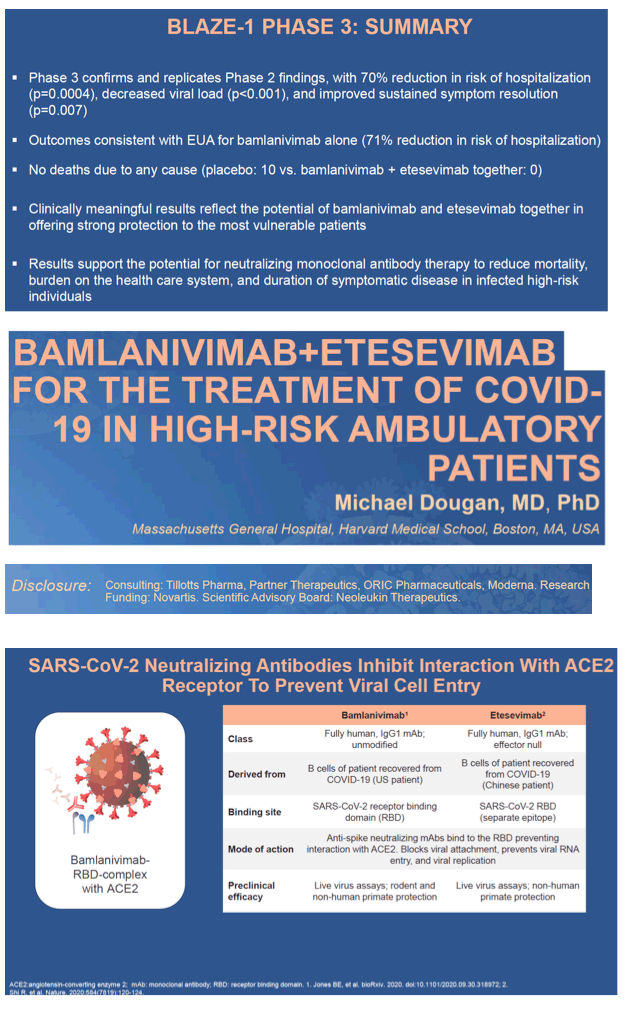
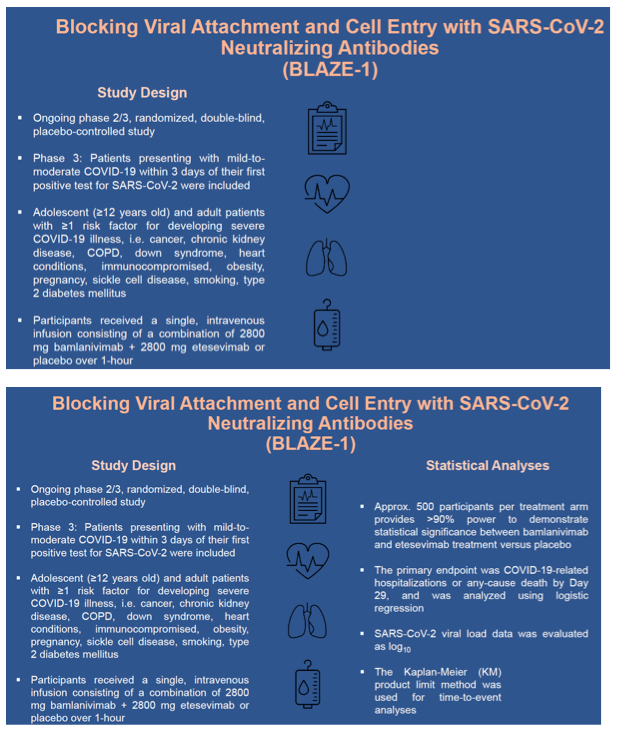
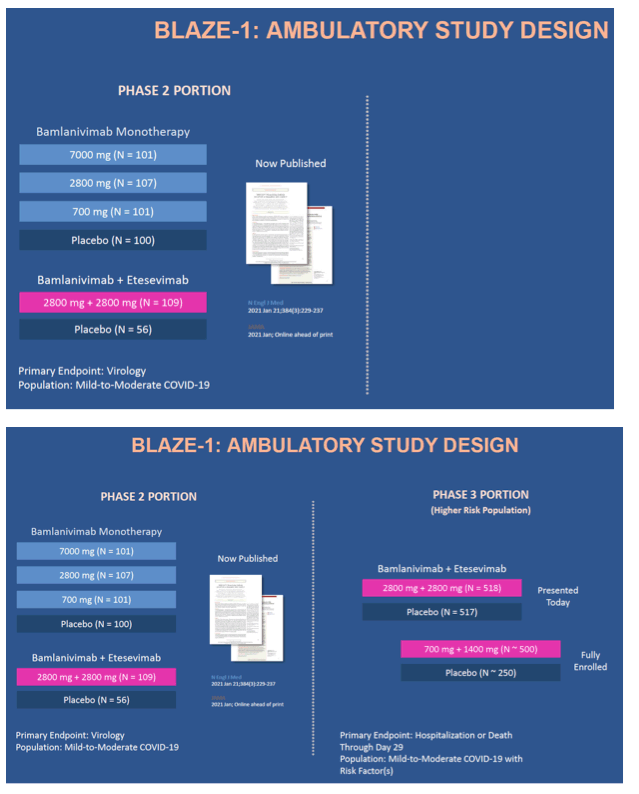
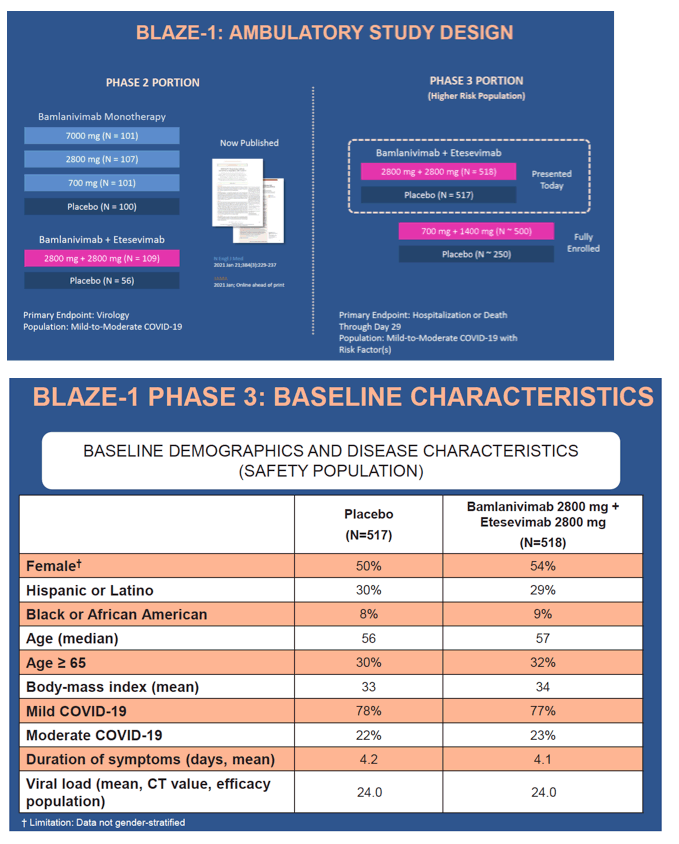
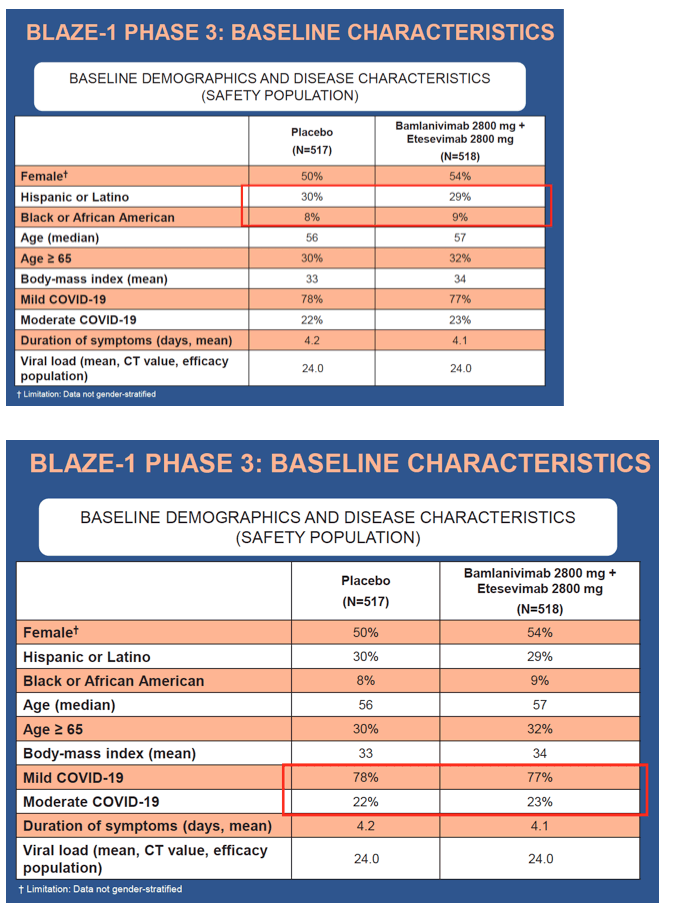
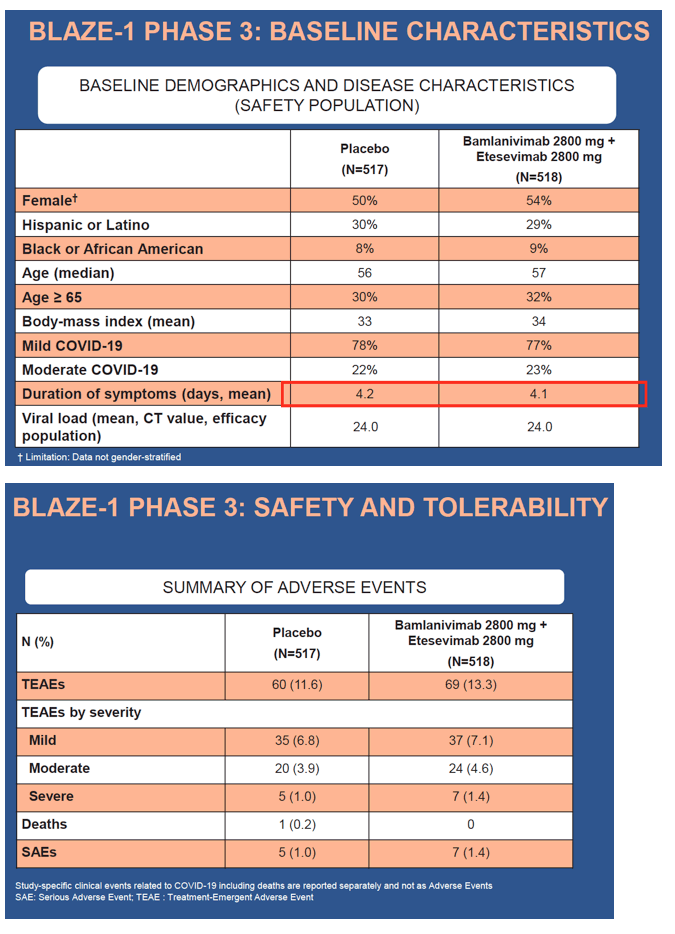
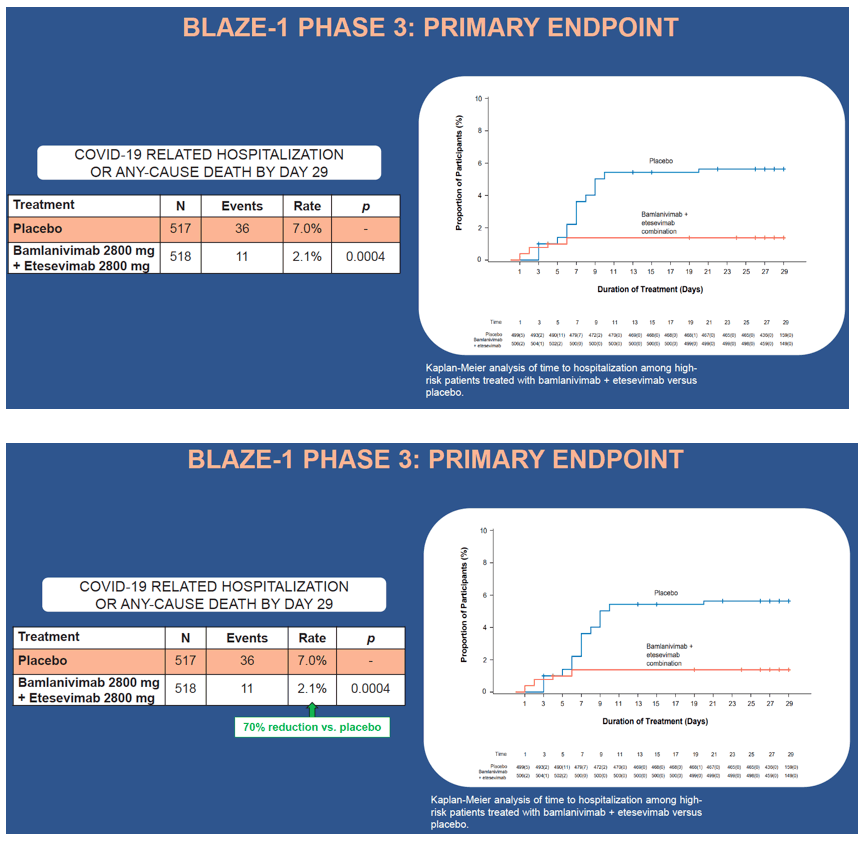
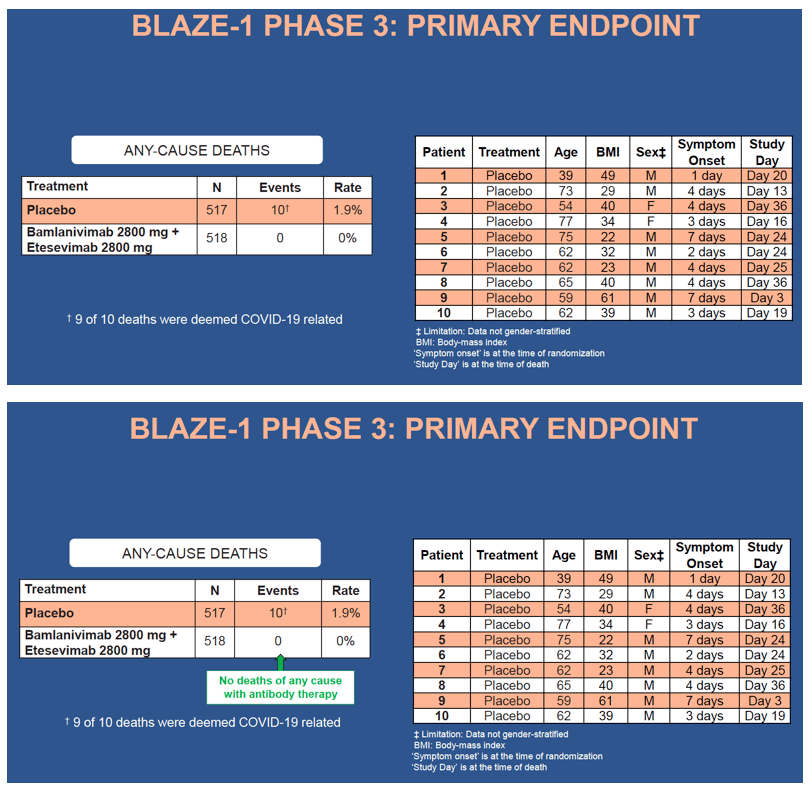
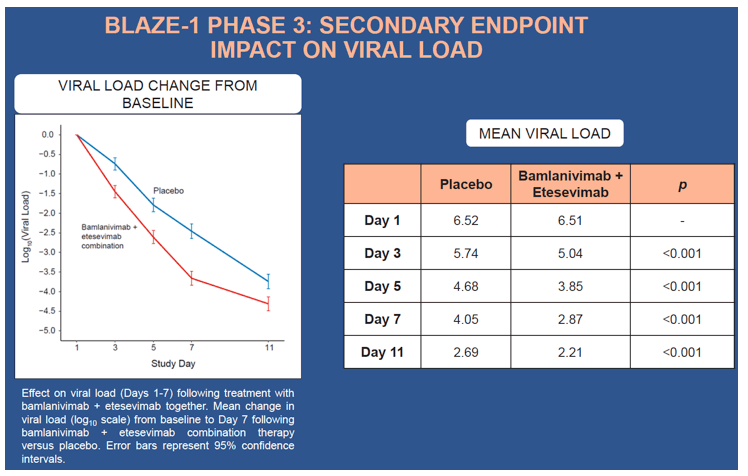
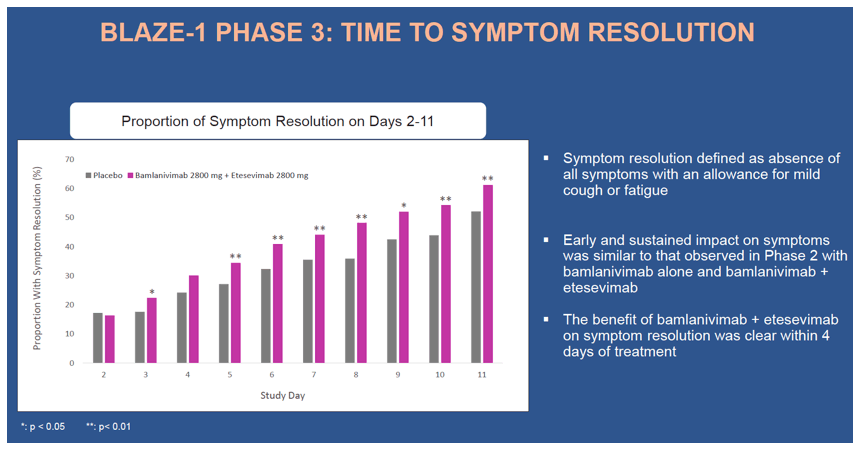
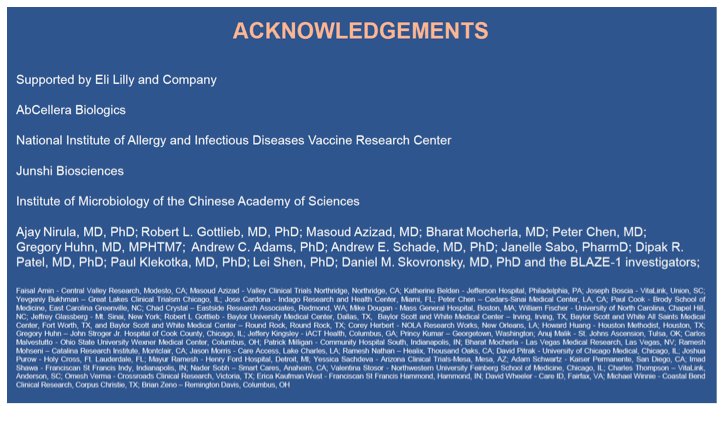
|
| |
|
 |
 |
|
|